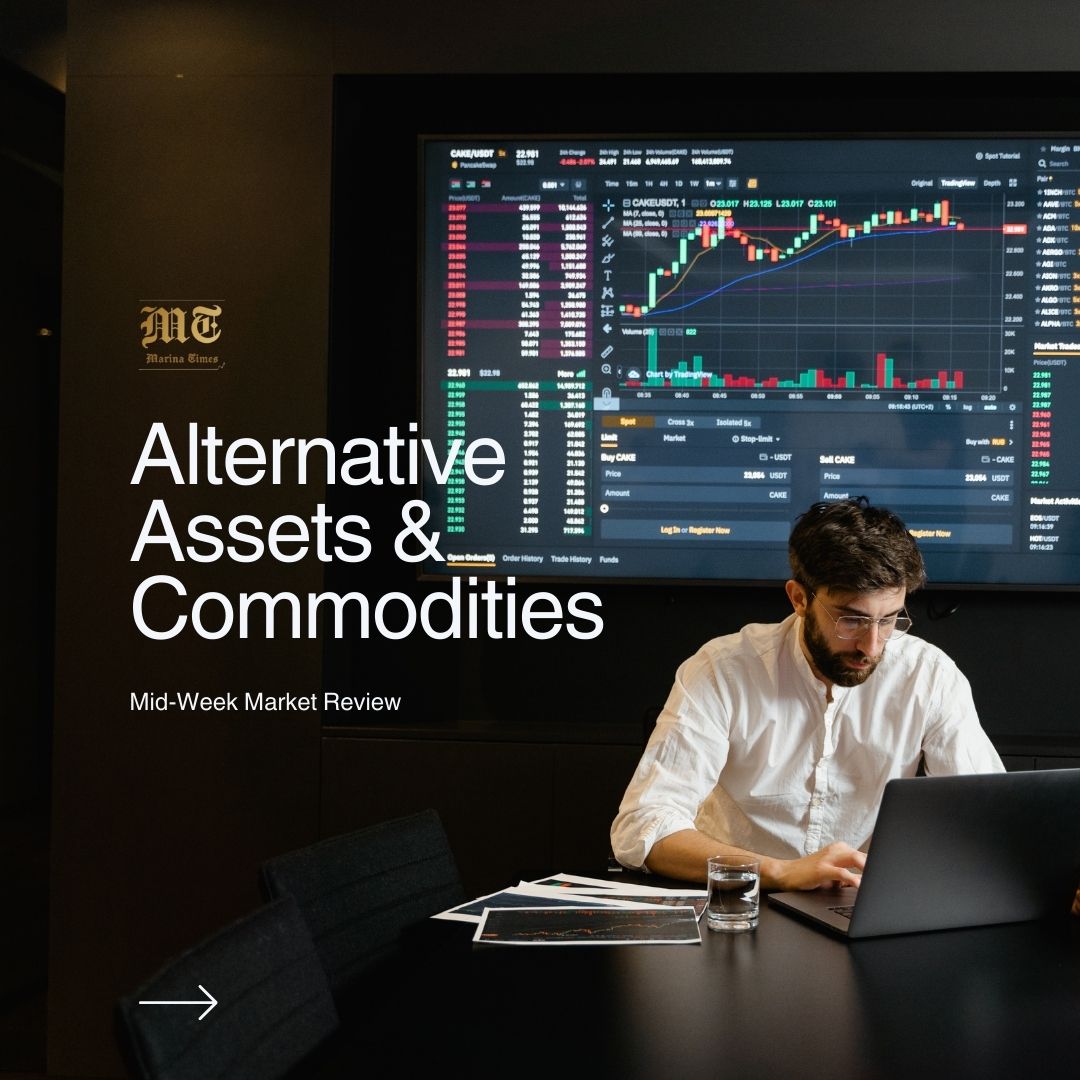

Oil prices dropped on Monday during a volatile trading session. US WTI crude oil declined by 0.87% to $73.16, while Brent crude futures fell by 1.04%, closing at $75.96 per barrel. Despite President Trump’s calls for OPEC+ and Saudi Arabia to reduce prices, no changes were made to oil production plans during the OPEC+ meeting. OPEC+ plans a gradual increase in output, starting with 120,000 barrels per day from April, bringing total additional production to 2.1 million barrels by late 2026. The UAE is also set to increase its production by an additional 300,000 barrels per day, reflecting recent additions to its capacity. However, these plans have been delayed multiple times, and with the International Energy Agency forecasting an oversupply of 750,000 barrels per day this year, even without OPEC+ expanding output, further delays are likely.
By Tuesday, markets experienced fluctuations during settlement, driven by escalating US-China trade tensions and the US administration’s renewed ‘maximum pressure’ approach towards Iran. The Treasury Secretary was directed to implement tough sanctions and economic measures targeting Iran’s oil exports.
On Wednesday, WTI crude oil futures saw a continued downturn, dipping below $72 per barrel, largely due to growing concerns surrounding the US-China trade dispute, which added economic strain on Iran. President Trump, as part of his re-election campaign, once again emphasized his policy to cut Iranian oil exports and curtail its influence in the region. This strategy could potentially impact 1.5 million barrels per day of Iranian oil exports. Meanwhile, markets remained cautious as China responded to US tariffs with its own levies on American coal, LNG, and crude oil, raising fears of a downturn in global demand. Similarly, Brent crude futures also saw a decline, falling below $76 per barrel, driven by concerns about the US-China tensions and pressure on Iran.
Throughout this period, despite the US administration’s efforts to limit Iranian oil exports, Iran, as the third-largest producer in OPEC, has managed to circumvent sanctions in the past, increasing its exports. Currently, Iran produces approximately 3.3 million barrels per day, constituting around 3% of global output. The ongoing trade war between the US and China remains a significant risk to global oil demand, putting further pressure on oil prices.
Additionally, China’s retaliatory measures may extend beyond the 10% tariffs on US crude oil, possibly including deliberate actions to weaken its currency should the US escalate its tariffs. Customs data shows that US crude oil accounted for just 1.7% of China’s total crude imports in 2024.
The world of cryptocurrency and finance is currently in a highly dynamic state. The fact that Jerome Powell, Chairman of the Federal Reserve, has stated that ‘banks are perfectly able to serve crypto customers’ signals some level of acceptance of crypto within the traditional financial system. This could indicate a shift towards more regulated and integrated crypto services, potentially bridging the gap between traditional and digital finance.
However, the market’s reaction has not been as expected. The fluctuations in Bitcoin and Ethereum prices—marked by significant volatility—demonstrate that crypto markets remain highly speculative. Such uncertainty is a hallmark of emerging markets, and when coupled with news of Tesla’s Bitcoin holdings and state-level legislative moves (like the Illinois Bitcoin reserve), it can create unpredictable market dynamics.
Christine Lagarde has expressed concern rooted in the traditional financial system’s approach to security and risk management. While cryptocurrencies operate on public transparent blockchains, her concerns about liquidity, security, and potential criminal activity likely stem from the fact that, although the blockchain itself is transparent, crypto markets can sometimes be less regulated. This can lead to potential illegal activities such as money laundering or security vulnerabilities in certain crypto exchanges or wallets. As much as the blockchain itself offers transparency, many centralised platforms and custodians within the crypto space might not operate with the same level of scrutiny or safety measures as traditional banking institutions. Her position could also reflect hesitation toward new technologies and the long-standing systems that central banks are built upon.
Regarding the Federal Reserve and potential access to crypto wallets or keys, one concern is control over crypto reserves and the security of private keys. If the Feds were to hold Bitcoin or other cryptos, it would require strict custody arrangements and highly secure management of those keys, given the irreversible nature of transactions on the blockchain.
The question of whether or not crypto can function as a liquid, secure reserve is a valid one. While crypto offers transparency, it does not always fit the mold of traditional reserves due to its volatility and the fact that its value can fluctuate widely over short periods. However, the same could be said for gold or even traditional currencies in times of crisis.
In terms of market movements, it’s hard to predict short-term market movements, but long-term projections suggest strong potential for cryptocurrency, especially as institutional adoption grows. Market sentiment is always influenced by news and regulatory clarity—a clearer framework from the U.S. government could bring stability and reduce uncertainty in the market.
Crypto presents an opportunity for significant growth, but with that comes the inherent volatility and speculation that can lead to steep losses. If you’re comfortable with the risks and have a long-term vision, then buying during a dip could be a strategic opportunity for wealth generation. Otherwise, sitting on the fence or staying out might be the safer approach, depending on individual risk tolerance